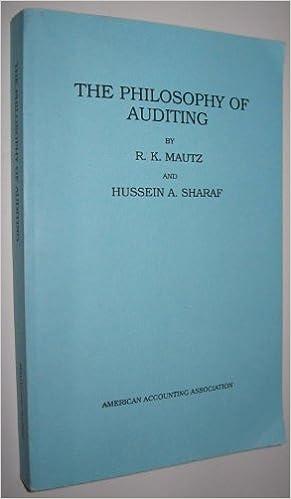 undefined
undefined
[1] Answer the following questions given the following information from Banzhaf et al., "Valuation of ecosystem services in the Southem Appalachian Mountains (2014). Table S4-1. Percent Supporting program by Bid and Scope in Raw Data Low-services scenario High-services scenario Combined Annual cost 10 75.7 74.4 75.0 50 63.3 66.3 64.8 150 52.1 57.9 55.1 350 44.3 44.9 44.7 750 38.6 47.1 43.3 Total 55.4 58.1 56.9 1. What is the Turnbull WTP for the low services scenario? (hint: it might help to graph the "demand" curve with the probability on the vertical axis and the annual cost on the horizontal axis) 2. What is the Turnbull WTP for the high services scenario? (hint: see above) 3. Do these data pass the scope test? [2] The demand for visits to a scenic recreation area has been estimated at Q = 100 P, where Q is visits and P is the travel cost of the trip. The average travel cost is P = 20. Use the spreadsheet (TCM.xlsx) or your own graph to answer the following questions. 4. How many visits are taken? 5. What is the economic benefit (CS) of visits (answer 4) to the recreation area? Suppose that the local environmental agency is considering a mining permit for a portion of the natural area. A stated preference study has been conducted and the demand for visits under the mining scenario is Q = 80 - 2P. 6. How many visits will be taken? 7. What is the economic benefit (CS) of visits answer 6) to the recreation area with mining? 8. What is the economic cost of granting the mining permit? Note that the cost is equal to the change in the value of the recreation area with answer 7) and without answer 5) mining. [1] Answer the following questions given the following information from Banzhaf et al., "Valuation of ecosystem services in the Southem Appalachian Mountains (2014). Table S4-1. Percent Supporting program by Bid and Scope in Raw Data Low-services scenario High-services scenario Combined Annual cost 10 75.7 74.4 75.0 50 63.3 66.3 64.8 150 52.1 57.9 55.1 350 44.3 44.9 44.7 750 38.6 47.1 43.3 Total 55.4 58.1 56.9 1. What is the Turnbull WTP for the low services scenario? (hint: it might help to graph the "demand" curve with the probability on the vertical axis and the annual cost on the horizontal axis) 2. What is the Turnbull WTP for the high services scenario? (hint: see above) 3. Do these data pass the scope test? [2] The demand for visits to a scenic recreation area has been estimated at Q = 100 P, where Q is visits and P is the travel cost of the trip. The average travel cost is P = 20. Use the spreadsheet (TCM.xlsx) or your own graph to answer the following questions. 4. How many visits are taken? 5. What is the economic benefit (CS) of visits (answer 4) to the recreation area? Suppose that the local environmental agency is considering a mining permit for a portion of the natural area. A stated preference study has been conducted and the demand for visits under the mining scenario is Q = 80 - 2P. 6. How many visits will be taken? 7. What is the economic benefit (CS) of visits answer 6) to the recreation area with mining? 8. What is the economic cost of granting the mining permit? Note that the cost is equal to the change in the value of the recreation area with answer 7) and without answer 5) mining
 undefined
undefined





